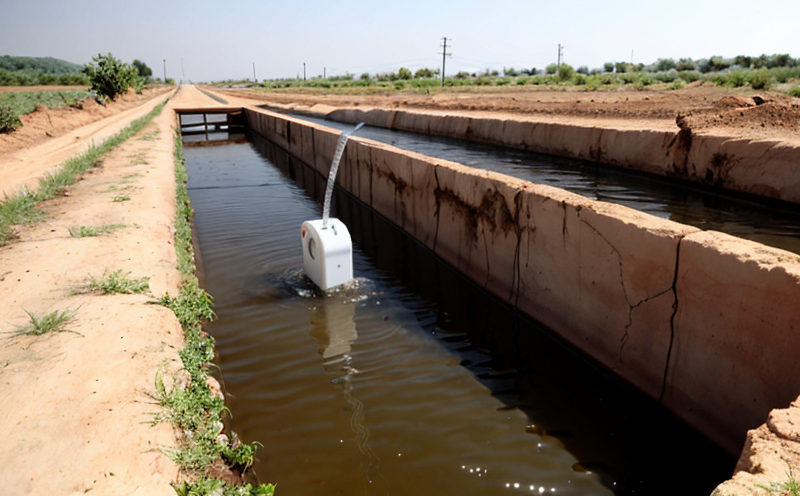ISO 5814 Dissolved Oxygen Measurement in Groundwater
The measurement of dissolved oxygen (DO) in groundwater is a critical aspect of environmental monitoring and quality assurance, especially within the mining sector. Dissolved oxygen concentration provides essential insights into the biological health and chemical composition of water bodies. In mining environments, where groundwater plays a significant role in both operational processes and ecological impacts, accurate DO measurements are indispensable for ensuring compliance with international standards such as ISO 5814:1976.
ISO 5814 outlines the methods for determining the concentration of dissolved oxygen in water, which is crucial for assessing the quality of mine effluents and groundwater. This standard specifies procedures to ensure that the measurements are reliable and reproducible across various laboratories and conditions. The measurement of DO helps identify potential risks associated with changes in the chemical equilibrium within the environment, such as oxidation-reduction reactions that can affect metal mining operations.
For mining companies, accurate DO testing is not only a compliance requirement but also an operational necessity. It aids in optimizing water treatment processes and managing environmental impacts. The standard ensures that all tests are conducted under controlled conditions to minimize errors due to changes in temperature, pressure, or other variables. This precision is vital for maintaining the integrity of mine operations and protecting the surrounding ecosystem.
The testing process typically involves collecting samples from specific points within the mine site. These samples are then analyzed using an oxygen sensor that adheres to ISO 5814 guidelines. The sensor measures DO by exposing it to a controlled atmosphere, ensuring consistent results across different testing conditions. This method is particularly important in mining environments where variations in temperature and pressure can significantly affect DO levels.
The accuracy of DO measurement is paramount for regulatory compliance and operational efficiency. Regulatory bodies often require that all water samples be tested according to international standards like ISO 5814, ensuring consistency and reliability across different testing facilities. Mining companies must ensure their laboratories are equipped with the necessary instruments and trained personnel to conduct these tests accurately.
By adhering to ISO 5814 guidelines, mining operations can better manage water quality issues, reduce environmental risks, and comply with legal requirements. This not only helps in maintaining a sustainable environment but also enhances the overall reputation of the company by demonstrating a commitment to responsible resource management.
Applied Standards
The measurement of dissolved oxygen (DO) in groundwater is governed primarily by ISO 5814:1976, which provides detailed guidelines for the determination of DO concentration. This standard ensures that measurements are conducted under controlled conditions to minimize errors and ensure consistency across different laboratories.
- ISO 5814:1976 – Methods for determining the concentration of dissolved oxygen in water
The standard outlines specific procedures, including sample collection methods, storage conditions, and analysis techniques. It also specifies the use of appropriate sensors and calibration procedures to ensure accurate measurements.
Benefits
- Enhanced Compliance: Ensures compliance with international standards, thereby avoiding penalties and legal issues.
- Improved Operational Efficiency: Helps in optimizing water treatment processes and managing environmental impacts effectively.
- Better Environmental Protection: Reduces the risk of ecological damage by monitoring and controlling DO levels.
Use Cases and Application Examples
- Mine Water Treatment Monitoring: Regularly measuring DO in mine effluents helps in adjusting treatment processes to meet environmental standards.
- Ecosystem Impact Assessment: Monitoring DO levels provides insights into the health of nearby water bodies, aiding in assessing and mitigating ecological risks.
In a case study conducted at a copper mine, the measurement of DO helped identify potential issues with the oxidation-reduction reactions affecting metal recovery processes. By adjusting the treatment protocol based on these measurements, the company was able to minimize environmental impacts while optimizing operational efficiency.





